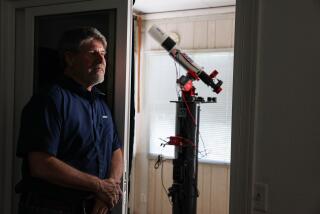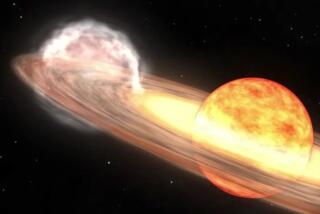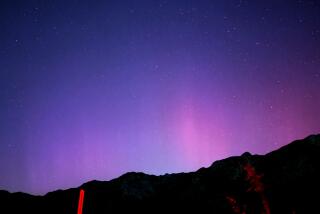New nova discovered shining in the night sky: How to see it
This week an amateur Japanese astronomer discovered a new nova shining in the night sky, and experts say it is getting brighter by the hour.
If you are familiar with the constellations and can read a star map, you can try to find it for yourself.
The newly discovered nova is just north of the constellation Delphinus. As of Friday afternoon, it was a magnitude 4.4, which means it is just on the edge of vision in a somewhat light-polluted suburb, said Alan MacRobert, a senior editor at Sky & Telescope magazine.
If you’d like to find it, you can check out the star map at SkyandTelescope.com.
Novae occur in binary star systems where a regular star like our sun and a super-dense white dwarf star orbit each other in close proximity.
If the regular star begins to expand, its matter can start to get pulled to the white dwarf star.
“It’s like water pouring out of the lip of a bucket, falling down onto the white dwarf star,” explained MacRobert in an interview with the Los Angeles Times.
After enough of the regular star’s material accumulates around the white dwarf star, the surface of the white dwarf blows up like a hydrogen bomb. (NASA has put together an awesome animation of this process.)
The explosion does not affect the core star, however, and once all the matter disperses, the process can begin again.
There are fast nova that brighten and fade over just a few days and slower ones that will linger for a few months, MacRobert said.
He added that this nova may be difficult for amateurs to find, but if you are looking for something easy and beautiful to see in the night sky, he suggested checking out an old favorite: Venus.
“At twilight, look to the west and northwest, and Venus will be the brightest thing you can see in the fading glow of the setting sun,” he said. “Of all the planets, it is at this point, closest to Earth.”







